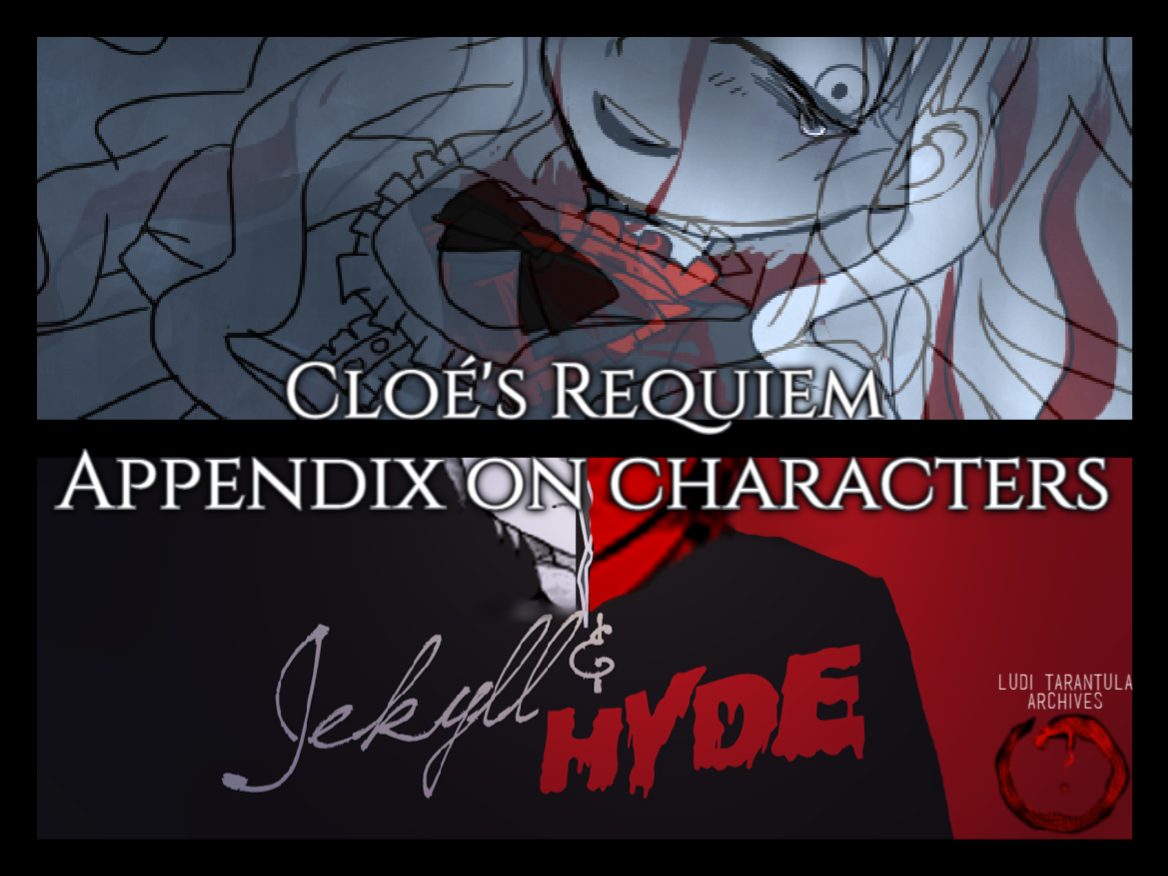As this story is character-driven, as PaoGun said a moment ago with all her justifications for the case , it is our duty to focus on the characters. We can finally begin our adventure!
Before getting to the core, however, I wanted to introduce this paragraph with the fact that this title was one of the works that gave me an introduction to how a character is given facets, to how to imply certain details of their nature, and in general to the concept of character analysis , which I will do here, from character design to the representation of certain disturbing details. Certainly there will be criticisms of the general writing (because, as will be said in the second part, this title also suffers from serious problems at the level of writing, especially the supernatural subplot …), but … Expect the results of years and years of study on these guys (in large part also done by Pao), and get ready to immerse yourself in the multidimensionality of the characters of Cloé’s Requiem .
They will be sorted from the least “interesting” case to the most complicated and fun to analyze, so …
Charlotte – The Japanese “maid”… In France?
Yes, as you may have guessed, the stalker-maid Charlotte is the less profound character in the game.

Come on, you’ll understand me, look at her design!

(I don’t have a precise idea of who the guy on the left is. It comes from a game that Buriki Clock seems to sponsor a lot …)
She is one of the characters I take less offense on, even when Buriki Clock does nasty marketing operations!
And this is simply because she is the one who most follows the stereotype from which her character starts, the japanese dandere .

Yes, the fans of Puella Magi Madoka Magica immediately thought of her, the past version of Homura Akemi: shy girl with glasses and braids.
I open this parenthesis: I don’t know if it’s just me, but especially in Japanese works the braids are always seen as a symbol of weakness… Maybe Charlotte with loose hair would become like this?

For those who have seen the link, or simply know the dandere stereotype, it is possible that you will tell me:
“Dandere ?! Charlotte is not sweet at all, she is a bi-“
Indeed, I agree!
It is practically one of the few things that detaches her from the stereotype of, in fact, the dandere, devoted to her master, shy (especially with the opposite sex), in general closed and taciturn (before being obsessed with Michel, after all, she didn’t even talk much, which is perfectly in line for a dandere character).
But, alas, this characteristic of being bad people anyway, even if a character is based on the stereotype of the “shy girl”… Charlotte shares it with another character (and therefore, I think with many others).

Toko Fukawa from Danganronpa: Trigger Happy Havoc.
Even Toko, while stammering, having glasses and … Well, the usual braids that, now, we link to an idea of ”weakness” in general , is a very acidic and antisocial girl.
“Why does e-everyone keep making fun of me …? I hope you all win the l-lottery and get hit by a b-bus …”
-Toko in Chapter 3 of Danganronpa Trigger Happy Havoc
“I’d love to s-scoop out that nasty brain of yours, throw it on the g-ground, and spit on it!”
-Toko in Chapter 5 of Danganronpa Trigger Happy Havoc
And that, together with her at times almost hysterical attitude of her when she is stressed / irritated, makes her a more particular character for me.
… Unlike Charlotte.


Although they share both braids, a relationship ability with others equal to a stool and an obsession with the serious person on duty (in the case of Toko, Byakuya Togami) … Charlotte is much more bland as a character, since he often blushes, etc …
However, speaking of her obsession with Michel, in Charlotte’s case we add the factor of Michel’s objectification (we will often repeat this word, keep it in mind!), Associating the his figure to safety and stability , also given his talent with the violin (which makes him useful and capable of doing something, compared to her who can only clean), and yet there is something that doesn’t come back to me…


Here, this… Redshank? Part of her… I just don’t understand it. She is a little girl recently introduced to high society, I do not think she had indoctrinated into this way of doing in her education (as we will see later with Pierre).

Here she is. This is Becky. We wanted to propose an honorable quote to this anime, Shōkōjo Sēra (Lovely Sara) , which took reference from the book “The Little Princess” (1905) by Frances Hodgson Burnett and as some, perhaps, will remember if fans of the historical anime of the 80s, it speaks of a very rich girl who fell from grace following the death of her father, forced to living in poverty and working as a kitchen maid for the boarding school in London where she was staying. We wanted to mention this work in particular also to make a comparison between Japanese audiovisual products that speak of a certain historical context that Europe lived . What we are talking about is certainly the Industrial Revolution , a phenomenon that sadly accompanied the theme of the division of the population into classes and in particular the exploitation of child labor of which series speaks, it seemed very interesting to introduce the work from this point of view.
I propose a reference to to the superlative soundtrack of the anime .

I add 5.52 minute to the list
You are welcome.
Now, come on. Just imagine Charlotte cleaning the floors of the Alembert house while she tries to be careful not to be seen for too long around by the residents in the house. Because this seemed to be the reality.
Becky’s character in the anime shares the same life story as our Charlotte, yet in addition to having a more breezy character despite being a sweet girl, did not grow up adopting the mechanisms that move the bourgeois society of the time, therefore did not even develop the malice that Charlotte demonstrates many times …
… Because it is much easier for a young girl to be empathetic towards her peers!
This mistake could have been fixed if the need to draw “cute” characters, along with the need to include the shy girl obsessed with the protagonist, hadn’t been so important.
With the maids of the Ardennes house, in the mother’s cutscene, we see girls gossiping about the fact that Lady Ardennes has become old, as you will remember.

But those girls seem to have been working there for a while, and being (unlike Michel’s, which seems to have fallen from grace) Cloé’s family part of the upper bourgeoisie, most likely those maids had worked for other gentlemen. In fact they are certainly much older than the girl we see in the Alembert house.
So, in short, to fix this part of his character that does not find a very logical explanation it would have been enough to give Charlotte a few more years , so that she could gain more experience on the functioning of bourgeois society .
But closing this parenthesis, let’s return to the general impression you can have on this girl.
Even though she has these moments …


… That detaches her at least from the stereotype, the Alembert house maid has little to analyze, being in the end only a narrative device for Michel’s first murder (or perhaps would have died better than being hit by a chandelier on the head if it weren’t), having been made deliberately insistent about what the boy hates most .
In fact she nurtures reflections that would be clearly more suited to the character of Mr. Alembert , who continues (for his own purposes) to push his son to play and make the world account for his abilities, ignoring any type of a more emotional factor like the fight with Pierre, even if from Charlotte’s point of view it was put down as a “hatred” that Charlotte feels towards the other twin …
However, the concepts that make it just a “trigger” for Michel don’t change.
And indeed:

Eh, dear Charlotte, about your dear and mentally unstable “young master” we’ll talk about it later …
Well, if she has surprised you by the adjective “mentally unstable” linked to a character like Michel… In his analysis you will see some good stuff, I assure you.
But for now let’s go to her brother, for whom Charlotte felt so angry.
Pierre – One side of the facade: the drama of appearing
I have a particular preference for this character.

He is presented to us simply as “Michel’s twin (more… Cool, according to some fans…)”, also blond and blue-eyed.
… And he hold a suspender. Is it too tight?
We will go into more detail on this later, but …
Have you ever had a tick when you are really upset? To stick your nails under the skin of your hand, bite the back of it?
Um, some of you have probably said no.
Haha… It always happens to me…
Um, back to us …
On the surface, what we see of him before his breakdown moment is simply a smart guy , a bit on the “smug” side when he talks about Charlotte’s obvious obsession.

But what makes him immediately stand out, always speaking superficially, is the repression of his anger towards his brother.

But we’re not going to talk about exactly that, analyzing Pierre Alembert.
Let’s go back to hours before this moment of anger and liberation.

If this dialogue at first friction seems really didactic to me, the potrait that Pierre shows makes me elevate it. A lot, too.
More than a very obvious foreshadowing on his frustration in having to continue to practice with respect to his brother, this sentence with that bitter smile connected … It makes me sound like a dig.
In the end, that’s what makes Pierre unforgettable: constant bitterness.


Oh, speaking of these last two screenshots.
Did you notice that sudden change of expression?
In the penultimate he was still trying to persuade his brother to play alone, given his father’s orders … So he was trying to be more convincing and less disturbed by it, even if he surely (as it is) will have marked it.
As obvious as water is wet, Pierre has repressed a lot in this scene as he has repressed his frustration since he started playing with Michel. He has now become a master in the art of repression!
In fact, immediately after a wait of 60 frames …

“Michel, I’m saying this for you, you have to aim higher…”
He threw it on the “brotherly love” that he clearly does not feel in this scene.
In fact, as soon as his brother contradicts him, with the infancy (which we will analyze later) that distinguishes him …

“… Dickhead.”
[…]


I hear his curses from here …
But why and how did he learn to be like this, practically like a pressure cooker?
Here we come to the main reason why Pierre is my favorite character (even though the most complicated in terms of character is his brother).
Pierre is a child of his context.
It is not common to find these types of characters , especially in the current of independent Horror RPGs. This is mainly due to the fact that there is so much focus on the single characters … that they do not take into account the context in which they are.
We describe Pierre with a few adjectives : false, therefore “bipolar” (not in the sense of illness, but in the most common sense of the term), frustrated up to violent hysterical outbursts (which we will resume with Michel), easygoing and (if we want to say it) a good speaker.
Tell me: in his situation in the 19th century, how would a perfect little man ready to become a gentleman behave?
It may seem like a silly question, but as I said it is not very common to find characters so integrated with their environment. If the myriad costumed works that you can see these days don’t help you find a concrete answer, I tell you that society at the time was even more rotten than the one we criticize so much now . Although I don’t know much about history (the part of the literary woman who tells you everything in detail… I leave it to my sister, she knows more than me …) I can say that was based precisely on the same principles on which Pierre is based; including repression of negative feelings (such as visceral hatred) to save one’s facade.
This great integration into the environment obviously comes from the example of a man that Pierre had all his life, his father : a classic man of the time who was very detached towards his children, indeed willing to use them to get back from his loss of money. Pierre has therefore learned also how to strike without being too direct with words.

But in the exact moments in which this expression is used (pierre3-5 in the game files), together with the constant detail that is in every potrait , that is to hold the right suspender, the facade breaks for those five seconds of “………… ..”, only to then show Pierre pretending again.
I asked you a question before:
“Have you ever had a tick when you’re really upset? To stick your nails hard under the skin of your hand, or to bite the back of it? ”
Here, if we take into account his nature as a repressed person, we can interpret the tightness of the riser as one of these ticks I mentioned earlier.
In my opinion that’s what makes him really creepy as a character; demonstrates (albeit marginally because the game then focuses on something else) on the one hand the effects of the education of the time…

Which ultimately hurt him mentally (obviously, right?). Also because he’s not a mentally stable man (and, even in that case, many end up going crazy for the accumulated feelings), but a teenager in the end: the most unstable age of all in the emotional field . The habit of heavy coercion on the part of his father and such a direct confrontation (given the criticisms of the people) with the world and with his brother led him to violent outbursts, hateful thoughts towards those who care about him, and moments of pure hysteria… Which he always had to cover up in the end with falsehood.
In the end, Pierre reflects a little the idea of the time that children had as adults in miniature . In fact, in the eyes of some players, Pierre has become nothing more than a repressed worm, ready to threaten his brother to kill himself.

Well … To move on to the next character, moving from the Alembert home …
“And I’m certain, life is terribly hard …”
Cloé – “Façade”, in its entirety

“When your life’s a façade!”
Oh yes, now let’s talk about this poor girl. Yes, if you don’t understand I have a soft spot for her… But she also makes me feel pity.
Well, already from the continuation of the song you will have understood that also with her I will talk about multiple faces, certainly.
To this, however, one could get there just by looking at her in … Face. Haha. I’m funny.
Apart from her expression, on that little face, under those round purple eyes, which suggest such a cute character, like a (although I hate to use this term for her …) “moe” character …
![]()
It is not a feature of astral production, when she is already dead, the potrait I have been considering is called “cloe life 1-1”, so it was used in the flashbacks of the game. So we can consider it just a thing of her design, which immediately suggests her double…

(Every time I like to notice the detail that the skin of the living Chloé from flashbacks and that of astral production are different)
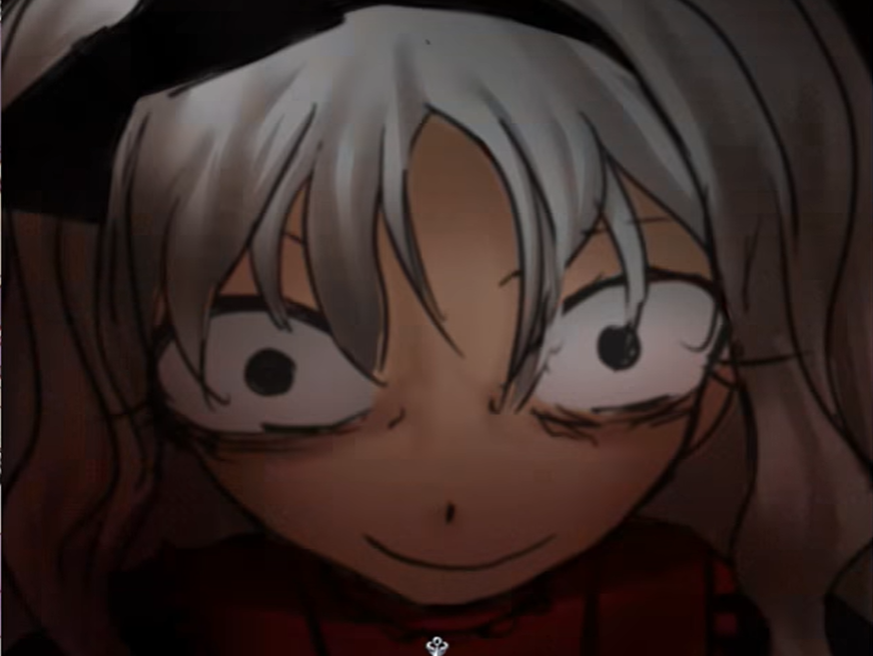
Triple…

Quadruple face.
Okay… Here we have to go very calmly already… We will analyze each of these attitudes of this poor star.
First side: Astral production – “kawaii melanchony”

Yes, it’s a pretty weird title. But if we take into consideration how he behaves in this state… You can understand.

Being a so-called “basic bitch”, Cloé’s attitude in these scenes always made me smile , she’s so cute!
Especially when we know her past, the player is inclined to feel empathy for this poor girl traumatized by her childhood because of a monster who found herself as a father (who then conditioned the whole family to abandon it to itself.)
This is mainly because of the element I’m harassing you with.

(Scarface, 1983.
Yes, yes, it’s always me, Ele, who writes this part of the article, I assure you.)
As for Pierre (although to be honest for me Buriki Clock did a masterful job with the expressions of all the characters), Cloé’s potrait because of how his entire facial expression was structured through the big purple eyes they almost always communicate melancholy , even if it has a design for which some consider it a “loli”.
Well, after all Nanashi No Chiyo herself, speaking about her cousin, expressed her ability to character design in an interview as well.
Nubarin’s drawings have different facial expressions depending on the character . A bright character has a cheerful laugh, and a cool character has a modest laugh. It also depends on their personality. You can tell which character they are by just looking at their face without the hair.
In fact, you may have already noticed in the very first potrait that I showed you that for most of the game she has eyebrows, even if only a little, arched. This, save in some expressions of her, gives her a perpetually sad look many times, however much her mouth smiles.
So we can say very well that the real drama of Cloé is not her curse, that was “taking over” before her death … However, we will talk about that at the end .
Second side: The diary – “I am human”


These sentences, even if they are didactic, never fail to make me sad . In Cloé’s diary we are shown the most serious and saddened part of her, the one that has always hidden from us until the end of the game her astral production.
What to say? A girl with a trampled childhood, but who has always understood that what she endured is unfair (unlike Pierre, who ended up learning from his abusive parent).

[…]
“Friendliness, gentleness,
Strangers to my life,
They are there in his face… ”

[…]
“I am in love with the things
That I see in his face-
It’s a memory I know
Time will never erase … ”
– Sympathy, Tenderness
(Jekyll &Hyde: The Musical) [2]
I know well that the theme of this article is related to Façade, but I have not refrained from mentioning this other song from the musical.
… But that in the end she ended up trusting what (as we will see in her paragraph and how he was introduced to you by PaoGun) in the end, when he returned to her to “save her”, he would share the sentences in red with his own predator, the one who ultimately represents what he really is … Bad luck, let’s call it that, different from what we will understand later as “curse”:
Objectification.
Yes, I put it in italic, bold and I made the text even bigger.
It is practically a central theme in the game , especially when it comes to Cloé.
PaoGun had also introduced it to you in her part of the article, this girl has been objectified by practically everyone, starting with her own parents.

“I’m not someone’s doll”
(I also interpret it in general as a “toy”)
Nor a pet ”

“That stuffed animal”
[…]

“You exist for me. Because you are my daughter. ”
[… And other similar phrases, but you can understand objectification very well given what Alain did to Cloé]

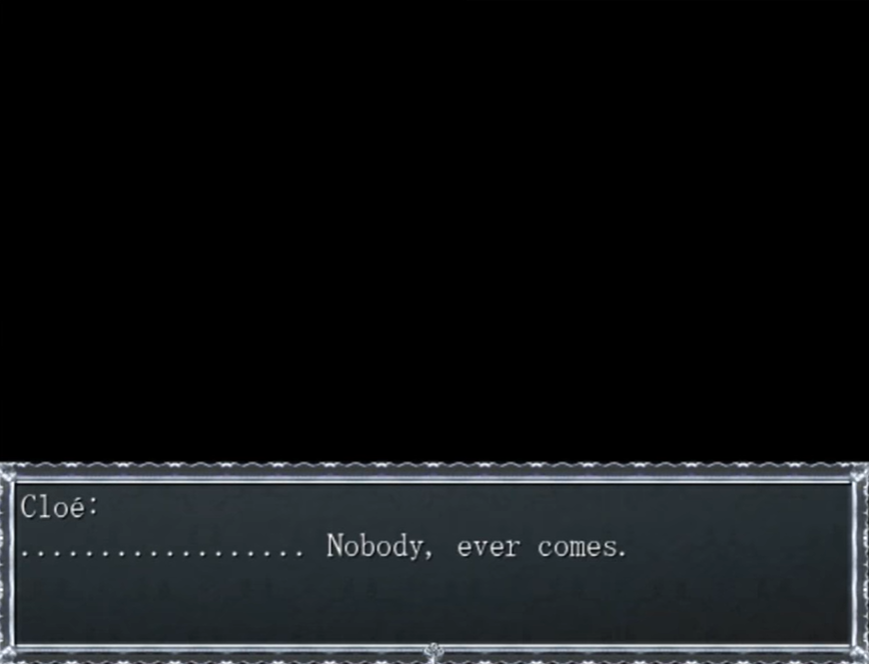
So, after this beautiful, almost tearful moment…
How did Cloé’s fragile mind react to these traumas connected to the sick people in her life?
Third side: Cursed Cloé – Curses as diseases



She has created another Cloé.
Now, we finally got to the main event for ‘this girl.
This is because exploiting the facade of the “curse” I would like to introduce an entire theory on which the title of this … Part of the paragraph is also based.
“Curses as diseases”
Now, I don’t know psychoanalysis so well to make complete diagnoses, (when there is a need to do them, Pao will help me) but reasoning with my sister we came up with this theory. What is it based on?
“In short, this representation and continuous distancing that the book takes, in the form of an investigative title, from the beloved by all Dr. Jekyll, could certainly remind us of the level of distancing and demonization that makes curses. “
Pao said, in her part of the Trump Card. Surely the curses are taken both by Cloé and by Michel, as “things” totally separate from them …
But in my opinion, in the case of Chloé, this thing is not totally false.
Returning to the classic that we have taken into consideration for many parts of this Back To The Future … If Jekyll has completely separated himself from his sick part and, in his case, even a murderer … Cloé did it initially through dissociation mental. </ Strong>
As I said initially, she “created another Cloé” as a coping mechanism for her trauma (keep in mind the terms “coping mechanism”, they will also return in the case of Michel).
So, for those who know a little about how the human psyche works …
Yes, Cloé Ardennes suffers from DID, Dissociative Identity Disorder.
For those who have not yet understood this speech that I am telling you, I too find it hard to explain to you, we can help each other together with Wikipedia, even if it’s not real clinical advice:
“Symptoms such as dissociative amnesia, depersonalization and dissociative fugue are related to the diagnosis of DID and are never diagnosed separately. ”

I guess it’s a clear example of “depersonalization”
“I’m not Cloé.”
“The real Cloé has been cursed.”
And if we take into consideration the fact that she has dissociated herself as a coping mechanism… We have a dissociative fugue.
“Psychogenic or dissociative fugue means a sudden, unexpected departure from one’s environment, with inability to remember one’s past, confusion about one’s identity and partial or complete assumption of a new personality . ”

Taking on a new personality, when she killed her father.
Moreover…
“Most patients with DID had suffered sexual or physical abuse ”
[…]
I think all the pieces come together: Cloé is a sick girl, before being a “cursed” girl.
The curse of the house, which Pao elaborated on in her part of this huge paragraph, simply made it possible to split physically the two parts in Cloé’s head, so it fully represents her mental disassociation , which however has already done, when she felt she was undergoing the effects of “a curse”.
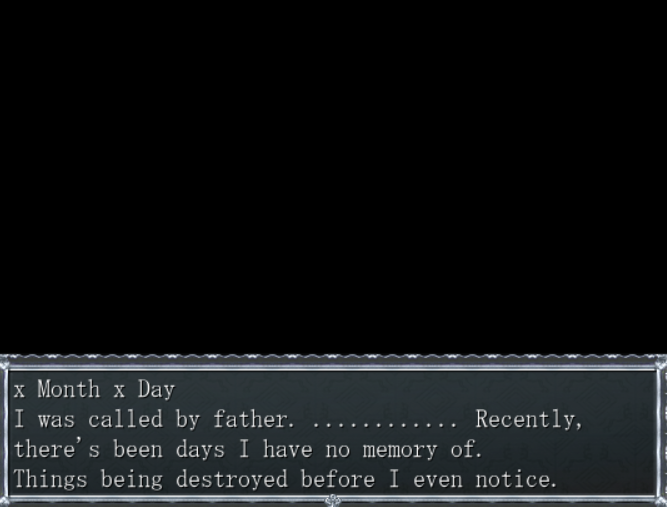
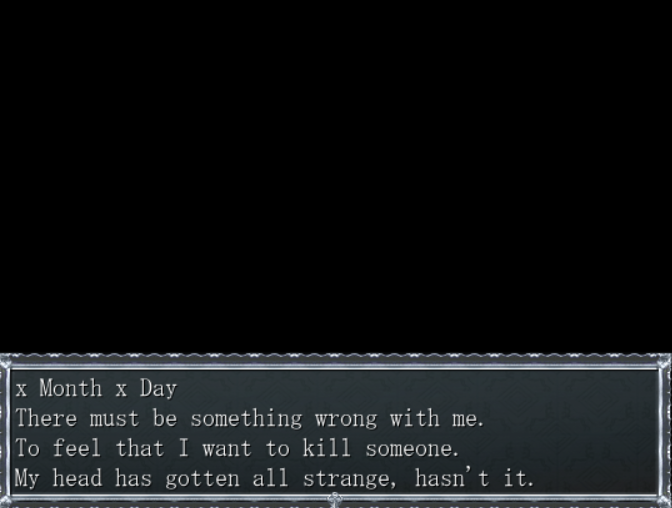


So, Cloé after death split into two different sides.
But the Cloé who wrote about all her torments and her sorrows in her diary, the Cloé who was really marked by the abuses she suffered … She is the one you will see if you superimpose these two CGs.

Cloé is not nor a “teddy bear”, nor a demon if she rebels against these treatments.
She is neither the sweet, almost holy spirit of a dead girl, nor a bloodthirsty beast consumed by a curse. In the end, Cloé is just a sick girl. A person, as she herself points out.
Or at least that would have been the moral of the whole game (you'll understand why later) if you don't had been some subplot !
I just suggest a little clue . For those who know the musical from which we are taking inspiration can guess that in all this we have never mentioned a song…
… A certain song called “ Confrontation ”. This is because Cloé has never had the chance to really confront her curse!
Her character had great potential but, as you have seen, all we have described here are facades . The many facets of her personality never meet, we never have the opportunity to see a real chronology of her psychological change.
The reason? Well, we will see the reason in the Work Defects .
Because this game, in addition to the lack of clarity (we repeat again that in the dedicated paragraph we will obviously explain why is unclear) also has a very heavy flaw which causes a lot of contradictions and which hindered the construction of the character of Cloé.
For the moment, therefore, let us stop at this point and return to concentrating on the interpretation of multiple personality.
Now you will tell me:
“My God, if Cloé is suffering from these problems, what kind of sick bastard is Michel?!”
We will see it soon. And I’m afraid. I have known these facts for years and have to write it to you and I’m shaking.
Michel -… Christ.

… … Okay, let's get started!
Don’t be fooled by his pretty face. You may think he is the typical kuuur, childish, problematic kid… But in reality he is much worse





Michel Alembert. How can I start explaining Michel Alembert? [3]
To understand this character totally … Let’s go from the beginning of the life we know, okay? Then we will expand …
Yes, my fear of talking about him is papabile , because I simply do not want to miss any details from at least ten years of solitary analysis (by me and my sister) on this boy!
So … Yes, he being the protagonist, so the only one who has an actual character development , and also being the most complex character in the game … We should divide his path into parts, and we will have to follow the events chronologically instead of following the plot.
Phase 1 – Diagnosis
Before moving on to the main theme of this first phase, let’s recap some crucial elements of Michel’s life . This will help with his final diagnosis.


Obviously, based on the way his father treats him, Michel has doubts that he is actually using him.

With this dialogue that happens a few days later … In which the information is slapped practically in your face, we know that Michel’s doubts are well founded.
But the next dialogue is likely to be more important than the previous one, as that’s what gets Michel to the limit.

“After his twenties, he will be an ordinary person.
Better use him now, when we can… ”
This line (even better structured in terms of dialogue) obviously marks it. Especially for the term “use” that Michel’s father used to talk about him.
Here returns a case more or less analogous to Cloé’s , and another central theme of the game: the exploitation of children, albeit from different points of view . We have it very marginally even with Charlotte.
This scene, where Michel’s doubts about his blatant exploitation are confirmed, takes place after the “death” of Michel’s cat, Cloè.
Here, let’s go to the cat for a moment, and why the event of her “death”, added to the revelation of Michel’s well-founded suspicions, took him to the extreme (although, this we will see it later in his diagnosis, he was a well-disposed subject already).
-Cloè, transitional object-
I felt compelled to put a headline on this part, even if it falls within the first piece of this long paragraph on Michel.
You remember the cat, don’t you?


That potrait, in my opinion, is really creepy .
Really, for how fast the change of expression is, it looks like a jumpscare.
And do you know what I tell you? That potrait is perfect for the situation!
Indeed, it is more than anything else perfect for the parallel which I will show you later, as in this scene Michel seems to have no fault, as he takes care of a cat who helped him through that difficult time.
But why then did I use more “serious” terms like “transitional object”?
“The transitional object is often the first possession ‘not me’ that truly belongs to the child. This can be a real object like a blanket or a teddy bear, but other “objects”, like a melody or a word, can also play this role. ”
Well, yes, you know the stereotype in the movies of the smallest child (maybe a little brother) who always has some kind of teddy bear in his hand? Here, connect this to this.
But I would like to link this precise part of the concept to Michel…
“The transitional object is often the first possession ” not me “that really belongs to the child. “
Don’t worry, we’ll figure it all out later with the scene we nickname “How Filthy”.
For now I just wanted to introduce you to the concept of the “transitional object” linked to Cloè … Along with that very disturbing potrait.
As I said, we’ll review all this later , and when you review this concept … Ooh, that’s where the real reason why Cloé’s Requiem is a “horror” game.
However, we can conclude that, most likely due to the lack of family affection, (his father treats him as we know it, his mother … Isn’t presented…? Maybe she died, or something like that. If any source can confirm that the lady of the house Alembert has passed away, I think this can further strengthen my final thesis) Michel has not yet fully reached the stage where one detaches oneself from a transitional object.
Now, without going into more complicated and even useless clinical speeches, Michel is continually described to us as childish.

“… Because of your childish desires, you cause me so much trouble!”
Here again we can see how Pierre, despite being the younger brother, looks down on Michel, having understood how the world works before him.

“That’s true. He complains, throws tantrums… ”
“… Like a child” I would add.
These are just two examples. So the thesis of a lack of development from this point of view , due to the lack of affection (or a sudden detachment from it, if the mother of the two brothers is confirmed dead), at this point is < strong> totally possible .
But besides the constant need for something to comfort him, what effects has this lack caused in Michel’s life, from the point of view of his behavior?
Let’s help each other once again with Wikipedia, as we did with Cloé.
Many of the points mentioned will be connected to the scene of his first murder, although there will be points preceding this one.
Be careful though. Michel has not completely descended into the abyss of what is commonly called “psychopathy” . Michel was a very predisposed subject throughout the game and was starting to show symptoms. Simply if he had not been helped in time (as we will see in the third part, “The therapy”) he would have fit perfectly with these descriptions… Because some attitudes, even at the age in which he is shown to us in the game, approach them fearfully.
Yes, we are there, we are at the title of this paragraph.
“Psychopathy can lead to committing acts of shocking cruelty, as no feedback on the victim’s emotions is possible.”

“Eh?”
But what kind of reaction is that when you see a dying girl asking for help?!
The even more “funny” thing is that he… He leaves. He runs away. And he leaves Charlotte there.
“Psychopaths get satisfaction from their behavior, and feel no guilt or remorse for their actions. On any threat or harm caused to third parties, psychopaths feel no shame or guilt, while they rationalize their behavior , blaming someone else or omitting any responsibility “


“If they are caught out or faced with unexpected questions, they simply rework their narrative to fit the new reality without stopping to think about things.”


Yes, these thoughts come directly next to each other.
“Hare (a professor, maybe?) writes about a convicted murderer who talked about his murders in a completely dispassionate, disinterested way”


“I had to steal sometimes to get out of town, yes,
but I’m not a fucking criminal”
-Ted Bundy, famous serial killer
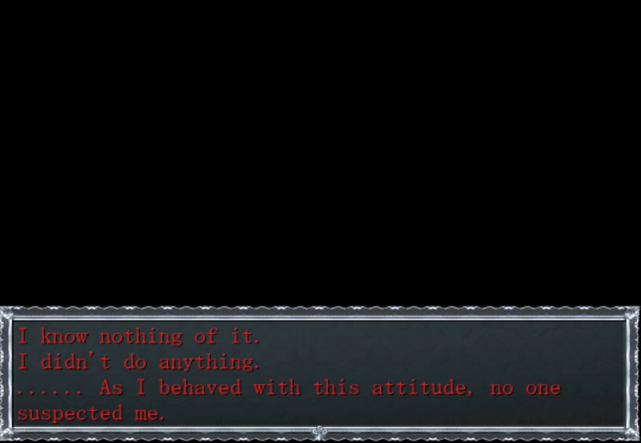
(Here we have simply the famous “propensity to lie” of psychopaths “)
But also before of this moment, the symptoms that Michel shows as a subject at risk are also present in scenes like …
“They are known to break relationships, plans and leave work unfinished ”

“They are generally not embarrassed or worried about lack of success in life.”


“In the workplace, indeed, they are known for irregular attendance, frequent absences, and unreliability.”


… There are clear signs of a subject propensity to subsequently suffer from a form of psychopathy.
But why do I always emphasize the terms “inclined” or “at risk”?
“Psychopaths do not perceive their emotions like normal people: some doctors have described them as simple “proto-emotions” or “primitive responses to immediate needs””

Does this seem like a proto-emotion?

Do reactions like these match this other sentence?
“Although psychopaths do not feel deep emotions , they often pretend to experience them.”
Absolutely not.

Here, remember this part? Where the quote said:
“If caught out or faced with unforeseen questions, they simply rework their narrative to fit the new reality without stopping to think about things .”
There is an inconsistency . Michel actually reflect on his actions, the questions he re-elaborates the answers… He asks them to himself.
Also, by showing you the screenshots above, I wanted to point out that Michel has not yet fully developed the main element that distinguishes psychopaths: the lack of empathy.
Although he demonstrates many times (especially in situations that bother him) detached behavior (heck, the kuudere stereotype on which it is based has its foundation in this!) you never see, apart from his outbursts of violence, a total lack of empathy in his character.
But even if we have these signs that can make us breathe a sigh of relief in his mental health … Well, his character is often put in parallel with Alain Ardennes, one of the biggest monsters we’ve seen in this game.
Phase 2 – The damage

“Sympathy, tenderness,
Warm as the Summer,
Offer you their embrace. ”

“Friendliness, gentleness,
Strangers to my life,
They are there in this face ”


“Goodness and sweetness
And kindness
Abound in this place! ”

(Images from the 2012 Jekyll & Hyde production with David Hasselhoff)

[…]

– Sympathy, Tenderness ( Reprise)
(Jekyll & Hyde: The Musical)
I know, with this introduction I will have given you a heart attack … But everything will be explained to you. For now, let’s focus on the last screenshot.
“I love you.
… Good night, my Cloé ”
Even at the beginning of the game Michel has a similar sentence in red, where he considers Cloé as “his”.

You also saw it in the introduction of its paragraph, right?
Eh? “It isn’t from Michel?”
“It’s Alain’s line?”
“Are you misinterpreting everything?”
Ah … I must remember to not have to deal with those who have played Cloé’s Requiem at least 10 times.
So … Let’s start with the events following the scene of his first murder, okay?


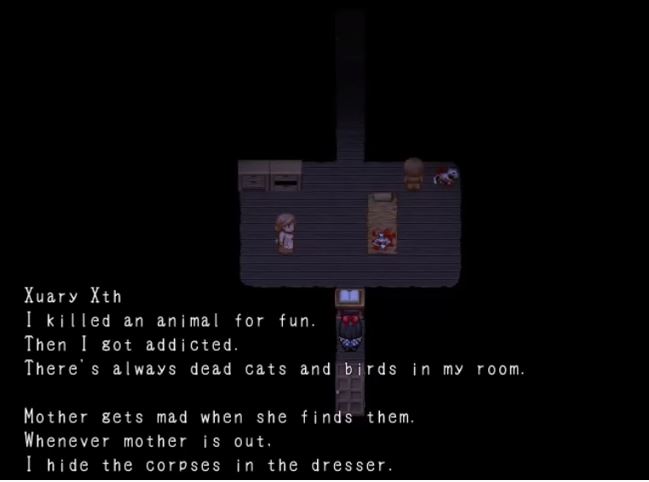
“I killed an animal for fun. Then I became addicted. There are always dead cats and birds in my room. ”
-Diary of Alfred Drevis, Mad Father

“Their lives aren’t worth much…”
(Talking about a hamster)
-Yuuya Kizami, Corpse Party: Blood Covered
“Sadism, often expressed as cruelty to animals ”
Okay, do you understand how bad his situation can be?
Well, let’s move on to something much worse , which will help you understand the meaning of the phrase “My Cloé, mine and mine only” connected to Michel.


“It’s like you killed her”
… Although she, to say, she could have survived by running away and therefore she could also be alive.


“If you ever go away from me … Even if you had life, it would be as if you were dead to me.”
This sentence comes after Cloé’s first flashback, the one with the background Moonlight . At the end of the show and final pleasantries, before going down to the illuminated ground floor … There is this sentence, totally out of context .
Don’t you think these latest screenshots connect too well to Michel’s situation with his cat?
“She went into the mountains alone, without me. So she’s dead to me. ”
So, if we enter into the mentality that the sentences in red, which seem totally out of context, are in reality a mirror of Michel’s situations and thoughts of Alain, in the end…

Yes, the game gives us a clear correlation between the two.
Don’t worry, have some tea. I’ll make you soften the blow …
…
…
Perfect, break time is over! There is still so much to say, come on!
But what is this correlation for? To make us even more worried when we talk about Michel?
…Not exactly.

“Ahh come on! In that scene, Michel was possessed by Alain, the connection obviously exists! “
Um … More or less.

To get to that moment, which we will analyze later, we go through various stages…

(It talks about Cloé. Hm… She makes him recover sanity… We’ll get to that later.)

(This dialog option can be obtained BEFORE reading Cloé’s diary)

“Bro, are you like… Stable? Mentally?”
-I, Ele, having this option about a year ago
“No! He’s not!”
-I, writing this at 18:02 on 29/12/2020
This apparently useless option … Or made just to show Michel blush, is actually soooo precious for the scene we will now analyze …
Finally, here’s the scene no one seems to have understood nothing …
– “How filthy” –
or
– Cloé, transitional object: Part 2 –
Therefore, we have already ascertained that Cloè (yes, for convenience from now on I will differentiate the two from the accent … The black kitten will have the grave accent – So Cloè, the girl the acute one – therefore Cloé) has performed the function as a transitional object for Michel in his life, until it is “dead” in his eyes.

But hey! A girl with dark hair and an innocent attitude is still alive!
One thing some people realized was this.

Michel, sick as he is, thought that Chloé was the human reincarnation of Cloè.
Yes, this guy really thought that Cloé was the reincarnation of a cat!
… At least, according to this theory.
What I will present to you, on the other hand, I think is more relevant to his reasoning.
Now, we always remember the transitional object thing.
Michel did not exactly think that Cloé was the reincarnation of his cat , but unconsciously (at least, before the scene from which the screenshot above comes from) made Cloé a substitute for his first transitional object, Cloè.
This reasoning would explain this scene.

[……..]

“The transitional object is often the first possessed ” not me “that belongs to the child. ”
Do you remember?
So we can understand that having taken Cloé as her “object” of comfort, seeing her father’s photo album made her “impure” in his eyes…
By now Michel had connected the girl to something beautiful, something pure, innocent and safe. In this exact scene, he finds himself demythologizing Cloé , describing her as “dirty”.
An additional reason could be why someone else had touched her. In almost every possible sense.
So he literally used her as an object of comfort, even coming to possession.
“But how? Michel had also been exploited and treated as a tool, how is it possible that he treated Cloé like this? “
Let’s go back for a moment to Michel and the revelation (“revelation”…We can’t exaggerate now) of his father’s exploitation.

I take the liberty of interpreting this sentence as: “… So this is how the world goes.”
Remember Pierre’s case?
“This great integration into the environment obviously comes from the example of the man Pierre had all his life, his father : classic man of the time very detached towards his children, even willing to exploit them to recover from his loss of money. “
In this scene we have the exact moment in which the exact same thing occurs.
Although he despises him, since “in the end that’s how it goes in society” Michel has unconsciously objectified Cloé in turn as a coping mechanism for the abuses he went through.

And this sentence explains it.
“Why do I have to be used by a guy like that?”
And above all, I add …
“Why do I have to be the one being used?”
So, after coming to this conclusion with Michel… Let’s think about that poor girl, let’s think about Cloé. My God, she never runs away from this thing! She never escapes from being objectified!
Her mother, her father and Michel…
Go back for a while, when my sister told you about the photography of Cloé’s Requiem.
“The screen tint, which first becomes dark and then increasingly red, supports the child’s extremely psychologized vision of reality, because in this particular point of the plot the direction is all focused on the characters who are the real stars of the game. “
We have a much more subtle case in this scene… Indeed, in Alain’s entire room.

The colors are blue, almost purple . To suggest a parallel and demonic dimension, if we want to exaggerate with the imagination … This is because the game is keen to let us demonize as much as possible Alain as a figure, as if he were a beast .
Let’s go back once again to the novel from which we took reference throughout the article. You thought Michel had nothing to do with the “split-double” talk, huh?
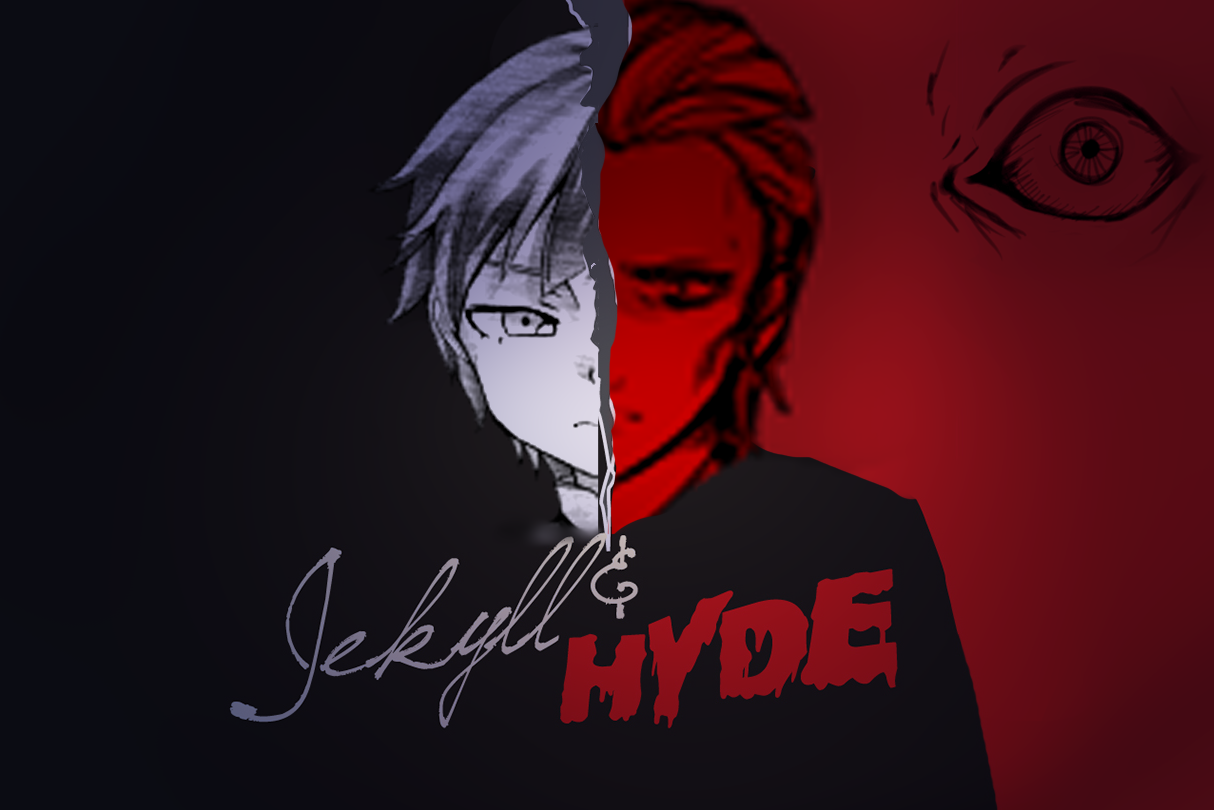
(I would have loved to draw something…
But for lack of time, here’s this.)
And here we go back to the beginning of this long, long paragraph!
I hope I was clear with everything. It was really hard for me to write, this paragraph was very complicated and touched a lot of different themes and a lot of different scenes…
So, before we get to Michel’s therapy, which amounts to the final stages of the game…
Let’s recap how problematic this kid is , via a simple list with just a screenshot or two accompanying each point… Where I’ll explain some details even better.
- Michel, having always been exploited by his father, has developed some symptoms so it can be assumed that he is a boy who risks becoming a psychopath as he gets older.


(Including great childishness and no worries about any failures in life, like in this case working for his father)
- Also, the affection he never had in his family (or suddenly broke away from) gives him the constant need to attach himself to anything that might connect with positive feelings , thus making the first cat who finds him his first transitional object, to which he gives the name Cloè.

- Given all that has happened with his brother, the discovery that his doubts that he was being exploited were well founded and the death of his kitten , Michel takes the extreme act against the maid Charlotte.

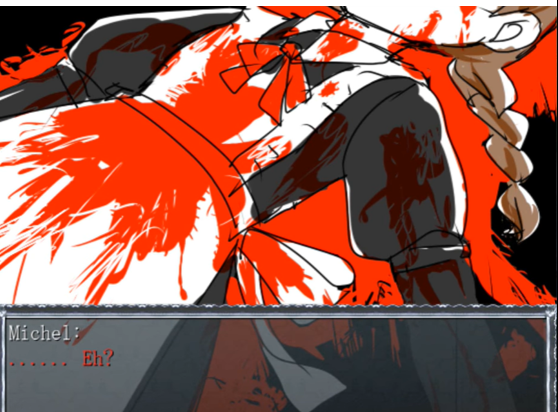
- This is his breakpoint, the one that increases even more the risk of him becoming irrecoverable, making him even disinterested in the act of murder. So, automatically, making him disinterested in the value of human life.
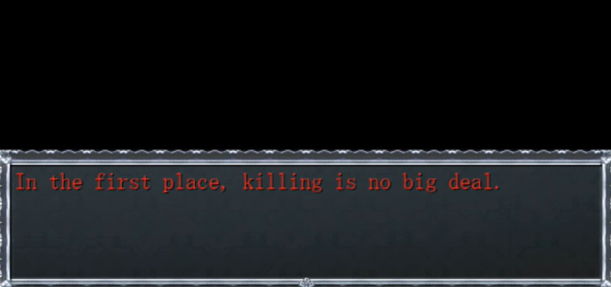
- To escape from his house, he arrives at Cloé’s house. Michel’s wanting to help her and being kind to her stem from the fact that, resembling his cat Cloè in “innocence”, he unconsciously transformed Cloé into his second transitional object .

- In short, he objectified her, as his father always did with him, and as Cloé’s father did towards her daughter. This gives the game the ability to make a disturbing parallel between the concepts expressed by Alain and the concepts expressed by Michel, which are identical in multiple scenes .


- So Alain can be the “bestial” part of Michel, due to the suggestions given by the directing and the same possession and objectification they did towards Cloé, which unfortunately unites them.
The thesis of the double will be further strengthened when we talk about the final fight against him.

- The only thing that differentiates them is the reason of Cloé’s objectification:
Michel has, as many young undiagnosed abuse victims do, twisted his trauma of objectification against Cloé, as a coping mechanism. For Alain, it was just sick lust.

- This explains “How Filthy”, the scene about the photo album :
Michel, having made Cloé his second transitional object , so something beautiful, cute, innocent and positive of course… So not even considering her anymore as a person with her problems, is more shaken than normal as he sees Alain’s photo album , and his view of Cloé drops to the point of considering her “filthy”.


Okay good … So, from this point …
How does everything evolve? How did Michel have his path of redemption?
Phase 3 – The final therapy
Okay… From this side on we can get some fresh air, we will follow the crucial facts more or less in a more or less perfectly chronological way.
During this moment …

To get the story going, you need to go to Cloé’s room.

[…]



And I say, at this point, since Michel had not considered her as human until the moment we will see now …
Cloé, dear, did you think he should save you ?!
HIM ?! [4]

But back to us …

Here, from this scene onwards what we call the therapy of Michel D’Alembert will begin, to restore values that he has only lost throughout his life.
In this scene he recovers the most serious: the consideration of human life, which he had lost with the murder of Charlotte.

“Cloé is just like me”
Thinking about it, having wrote the entire second part in one day (which I’m continuing now, it’s currently 9:30 pm), this sentence strikes me even more after describing Michel as the one who hadn’t even considered Cloé as a person… Now he considers her his equal.

[…]

While it is a stretch as big as a house for the player to read the note “behind the piano”, we can interpret it as a “litmus test” that Michel does, to test his mental health … And also, if desired, his empathy. Empathy, the only thing that in the end he never lost, which saved him from the advance of his latent psychopathy.

Okay, I’ll label this potrait as “the gaze of the repentant man”
Finally Michel is sure he can heal completely from er …
His selfish desires, he says …
From his illness, we say.
So, he apologizes.


Cloé’s response represents the player’s reaction (including me, at the first play!) to this whole scene.

Really, the Italian youtuber that Pao and I followed the first time we spotted this game reacted with a
“Okay, uhm… So what?”
But we will deepen this thing in the second part of the article, in the Defects (HUGE defects, I would say) of the Work.
For now let’s focus on one thing … Let’s remember, Cloé was unaware of all the sick conception that Michel had of her …
That’s a really fucked up thing to think about!
I mean, if she had known what Michel thought of her, if he had never changed and the plot would have continued … Their relationship would have been, unbeknownst to a lot of players who would have done loooots of fanart, toxic at very high levels!
I… Guys please don’t let me think about it, Michel is already frightening to me as a person, thinking that his buggy mind has been cured is the only thing that doesn’t make me fall into depression.
So, now let’s think about continuing his path to sanity…
Yes, because he still has a little thing to fix…

Which was definitely not the one represented in this scene!
Aahh, if the third act of Cloé’s Requiem could be placed, for me, in the Work Defects in almost its entirety, this is one of the worst scenes!

“At least as long as the authors say I need more screentimeee…”
Okay, we’ll get mad at these scenes in the Work Defects…
(I’m putting you hype, huh?)
So… Take this interpretation with a grain of salt, because my general opinion of this scene is that it was done just to give Charlotte more screentime , since on the first floor there was the room with the eyes dedicated to her …

… And to show that Michel had killed his father and another maid…

From this sentence, probably, if we take into consideration what we said with Cloé, about the “Curses as diseases” and that it was the murder of Charlotte that was Michel’s “breakpoint”, in the midst of his outburst…
Yes, this is probably his representation of his risk of psychopathy…?
The problem is that Charlotte does not show up in a phase in which Michel is perhaps still in doubt, or he is still completely ill… But rather when he is “already in therapy”, when he is already redeeming himself. And furthermore, even if Charlotte were his latent psychopathy, Michel does not face her … At first he runs away, then he stands there, with poor Cloé (who literally “spawns” on the map) still unaware of everything asks him:

“With all due respect, can you PLEEEASE tell me what damage do you have?!”
So… Yeah. The “gray scene” doesn’t make sense.
As well as the puzzles we’re going to have after it … So let’s jump right into the important scene, okay?

(Apart from this sentence, which in my opinion reinforces all the theses of the part on the damage of the disease)
Ah and yes, the scene with the Nocturne in the background only serves to “reveal” that Cloé and Michel had already played together, so we’ll skip that too…

And more inconclusive puzzles …
Oh God! Now you understand, in part, why I put this entire phase in the Work Defects, personally!
Ah, now finally, before we get to the final stages (from the “fight” against Alain onwards, although I won’t talk about the endings for the same reason that I will explain below)…
“Wait! There’s the whole subplot of Michel’s hatred of the violin? You didn’t talk about it!”
I’m sorry I didn’t tell you before, but that will be almost totally in the Work Defects… As well as the endings of the game , together with all the steps to get the real one, that is have the protective amulet…
Since Michel’s hatred of the violin and not himself, I explain it to me as if it were a simple further symptom of his psychopathy (it has already been mentioned with Charlotte the “do not blame oneself but people or third things”, typical of psychopaths) and the endings are part of the game’s confusing supernatural subplot…
They will have their own section.
But now we are continuing to analyze Michel’s journey towards being a decent human being.



“This scene is also useless! You will break Cloé’s curse by fighting the white hair girl, what does he have to do with this?! What’s does that girl have, two curses?! ”
No she doesn’t have them…! I said it about her, when I was talking about her!
“ Bad luck, let’s call it that, different from what we will understand later as “curse”: Objectification. ”
“Oh God, again?”
Oh yes, again! But here returns the theme I mentioned in the second part of this very long analysis on the goddamned Michel D’Alembert!

I have put this edit in this article three times …
Wow.
Michel still has to completely disintegrate his “beastly” part , and in this scene Alain represents a concept that I introduced to you in the re-cap of the concepts of the second part of the analysis.
“Michel, having always been exploited by his father, has developed some symptoms so it can be understood that it is a boy who risks becoming a psychopath as he gets older .”
Alain represents precisely this risk and defeating him involves having the resolution of having recovered one’s good ideals, and never falling into the same mistakes again in the future.

In fact, in a so-called “bad ending”, that is a failed therapy according to my vision of the game, Michel says he is “the same as that time”:
in short, he blatantly says that he has failed to change, and that he will surely become a dangerous subject in the future.
So… One hit, two hits, three hits with the hammer …


Yeah, dude, you could have become like him when you grew up.
Bad , bad, bad.
Perfect, finally Cloé is released from bad luck that makes her always be taken as an object by everyone …
And above all Michel-

Oh! He answered himself! At least once you helped me understand what the hell you think … Asshole!
Yes, that insult comes from many repressed curses towards him … Entering Pierre’s head hurt me, huh?
Yes! That was the cause of your “curses”! Objectification! I was repeating it until I had to vomit!
So, thanks to this holy phrase, we can understand that Michel has finally clearly understood that his entire coping mechanism to, in fact, cope with what he went through in reality is the wrong thing to do , which causes hatred, toxic social relationships destined to end badly and suffering from those in front of you!
Let’s take a moment to give Michel a round of applause , he managed to solve all the mental problems of about, I dunno, eight years of life (I don’t know when he started playing and being exploited) in one night!
… And that now, from the True Ending onwards, he will have to deal with a sense of guilt that will haunt him for life probably, in prison. And he’s also an orphan.
…. C’est la vie .
Really, let us realize the psychological evolution that he has had.

From this …

To this …

To this!
Our journey, together with Michel’s, was a long one to go …
We’ve been through a lot, just analyzing his character, don’t you think?
Michel, being the main character, had a truly masterful character development in my opinion , albeit interspersed with what-the-fuck parts, and others inexorably ruined by the confusing plot (main reason why not I’ll talk about the endings).
But as you have seen in the rest of the article, Cloé’s Requiem in general boasts a truly exceptional cast , with almost all the characters-
“Sick! They are all sick in the end, for you! ”
Karen, again ?! [5]
Here, now I’ll explain better… Interesting characters to follow the events of (especially in such a character-driven story, as my sister already said!), given their complicated situations and contexts who created… Yes, really fucked up people!
The direction , then, for those who liked this game with all its elephantine defects, it proves in many parts interesting, and which in my opinion deals with such complex themes with little drama that other works would dramatize a lot, in the wrong way and uselessly, making the work in bad taste.
So… Yes, at least in my personal opinion…
… Stop pointing pitchforks at me…
Cloé’s Requiem is not perfect. Really, it isn’t . That is, in some parts it makes me think “damn this game is so shitty!”…
But, for these elements that we have described to you, and which may or may not have attracted the public (because I just have a slight suspicion that it was only attracted by the melodrama), I venture to say that it will remain one of my favorite Horror RPGs .
… Of which in the second part we will discover all the crap that surrounds it, and we will both be angry as beasts!
“At the end of the day,
They don’t mean what they say,
They don’t say what they mean,
They don’t ever come clean –
And the answer –
Is it’s all a Façade! “
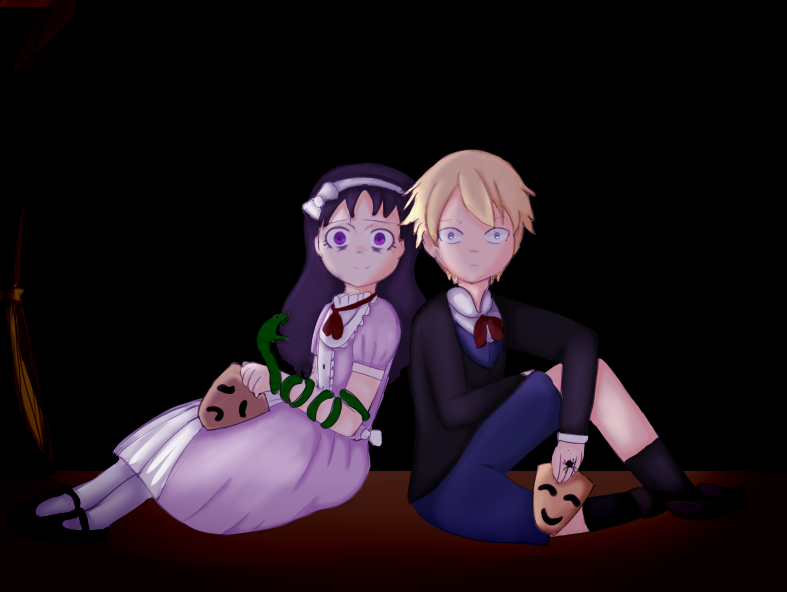
_____________________
[5] The prople who have read the latest devlog on The Rebirth Of Franklin Albrecht will know that we are referring to an imaginary person who is constantly pissed off at us
[4] Hello! I’m a wild PaoGun and I’m here to link you to another version of the scene from the musical Ele has put screenshots for. I refer you to this: Sympathy, Tenderness (reprise) \ Confrontation – Jekyll & amp; Hyde , is the 2015 representation with Frank Fernandez in the title role. Do you want to suffer from insomnia for the next month? Good. Listen to the whole piece and think that those screams you hear in the video from the poor victim could have also belonged to Cloé, because of Michel himself. In short: Hyde kills Lucy when he discovers that he wants to run away from him , there is the reprise of a song that had belonged to all the hopes that this person represented for the girl , and among other things at one point in the passage we hear the killer’s voice become higher than normal, like the ones of a child . It is very different from the idea of the “great shadow with a hoarse voice” that I have heard so far.
[3] From “Don’t let yourself be fooled…” to “How can I start explaining Michel Alembert?” : Quote to Janis Ian from the movie “Mean Girls”, talking about equally indescribable Regina George
[2] In the musical this song has a reprise. This will also happen in this article .

